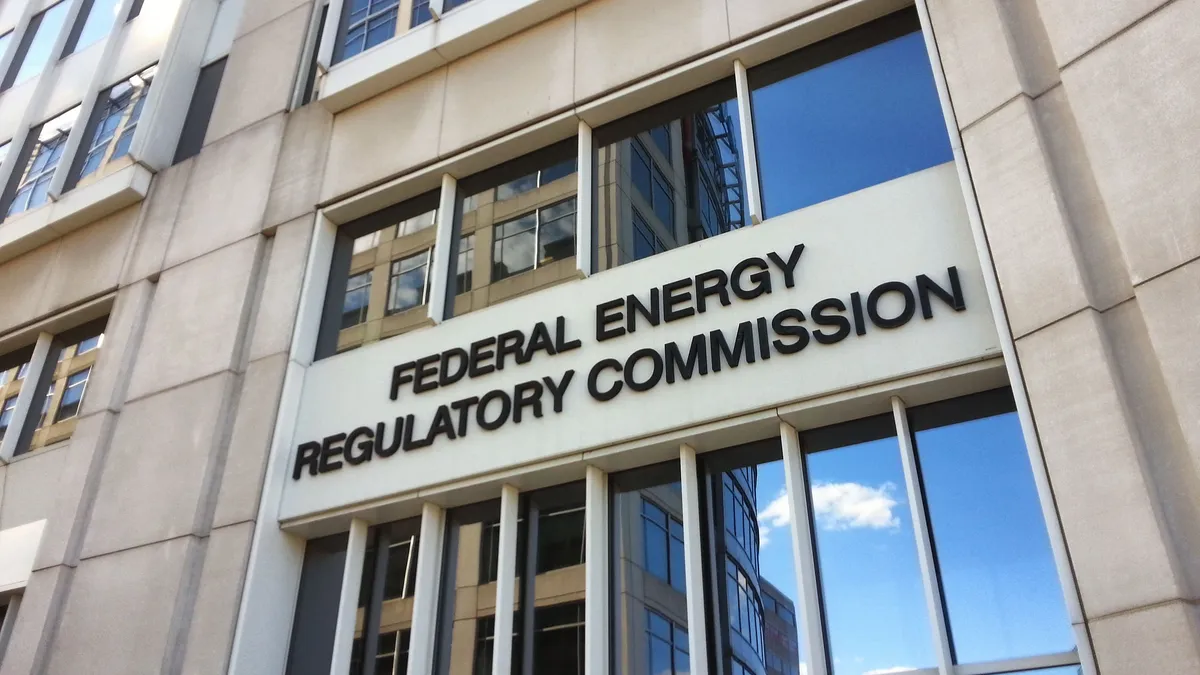Dive Brief:
-
Federal regulators on Thursday announced they would hold two technical conferences based on issues raised by stakeholders — one on carbon pricing and one on whether current grid operator frameworks are suitable for offshore wind integration.
-
Transmission development company Anbaric filed a complaint with the Federal Energy Regulatory Commission against the PJM Interconnection last November, asking the commission to find that PJM's transmission interconnection procedures deny meaningful access to offshore wind and similar remote generation technologies. FERC dismissed the complaint, but agreed to hold a technical conference to explore the issue more.
-
The commission also announced it would host a commissioner-led technical conference on carbon pricing, in response to a request from competitive power suppliers, clean energy advocates, the gas industry and others. "When such a broad group of voices asked the commission to convene an exchange of ideas, I think it's important that we do so," FERC Chair Neil Chatterjee said during the meeting.
Dive Insight:
Commissioners were broadly in consensus on the importance of the offshore wind and carbon pricing conferences during Thursday's monthly open meeting.
"The fact that we're going to be having a technical conference on how to develop offshore wind and the transmission issues involved with it is very important," Commissioner Bernard McNamee said during the meeting, echoing comments from Commissioner Richard Glick, the lone Democratic appointee on the commission.
Glick said he agreed with the commission's decision to dismiss the Anbaric complaint, but said key questions related to offshore wind and transmission "warrant further investigation." Specifically, he pointed to Anbaric's argument that transmission planning under the eastern regional transmission operators' jurisdiction and elsewhere should plan transmission ahead of offshore wind deployment, to avoid expensive and inefficient development.
"Offshore platform transmission projects, where the transmission is built in anticipation of generation, may be the most efficient approach for accommodating the growth of offshore wind," said Glick. "I commend Chairman Chatterjee for noticing a technical conference to explore whether existing RTO [and] ISO frameworks can accommodate this anticipated growth."
As more eastern states set large offshore wind goals, having a system to minimize costs as well as environmental harm to the ocean, and maximizing efficiency is essential, Anbaric argued in its complaint. On land, the grid already exists and is relatively easier to connect to, but things are "very different" with the ocean, Theodore Paradise, senior vice president of transmission strategy and counsel at Anbaric told Utility Dive.
"We're talking about tens of gigawatts across the Atlantic seaboard to start to meet some of these targets in the near term, not really that many years out," he said. "You can't just run a radial to each wind farm. It's super expensive, that's a ton of cables, kind of spaghetti on the ocean floor, as some people describe it. … environmentally, it's kind of a disaster … which is ironic because that's what you're trying to avoid."
Overall, the company is pleased with the commission's decision to hold a technical conference, and Paradise says it could lead to a rulemaking process that would address their initial complaints with PJM. "Getting to the technical conferences is a really good outcome from today," he said. Offshore wind advocates were pleased with the move as well.
"FERC's initiative to take a holistic look at how offshore wind can be better integrated in organized markets is forward-thinking, given the significant growth expected for the U.S. offshore wind industry in the near future," Laura Morton, senior director of policy and regulatory affairs for offshore at the American Wind Energy Association, said in an email to Utility Dive.
Offshore wind stakeholders have also criticized the commission for its December order directing PJM to adopt a minimum offer price rule for all new generation that receives a state subsidy, which most analysts agree is likely to raise the prices for offshore wind and make it more difficult for the resource to compete in the wholesale capacity market.
Chatterjee on Thursday told reporters that the decision to hold the technical conference was directly related to the anticipated growth of offshore wind, but that the two issues are related in that the conference and the MOPR "are similarly forward looking."
"I've always been a big believer in renewables and their ability to compete in the marketplace if given the chance. But if you don't have a competitive marketplace then all generation types, including renewables, will be harmed in the long run," he said.
FERC also announced it would examine carbon pricing more closely through a technical conference, as was requested by a diverse array of stakeholders, including NextEra Energy, Vistra Energy, Calpine, the American Council on Renewable Energy, the Natural Gas Supply Association, Advanced Energy Economy and others. The coalition applauded the commission's move in a statement.
"Carbon pricing in organized markets could be a powerful and cost-effective tool to drive down emissions and achieve state policy goals while preserving the benefits of competition," the group said. "There is overwhelming support for a FERC-led conference on carbon pricing from all corners, including state regulators."
The group first wrote to FERC in April, asking the commission to examine more closely how the policy could help states reach their clean energy goals. Chatterjee said he expects the conference to be a "lively exchange," and will likely include discussions over whether FERC even has the legal authority to implement carbon pricing.
"Certainly some of my colleagues will be raising those questions," he said.
The staff-led offshore wind technical conference will be held Oct. 27 and the commissioner-led carbon pricing conference will be held Sept. 30.















